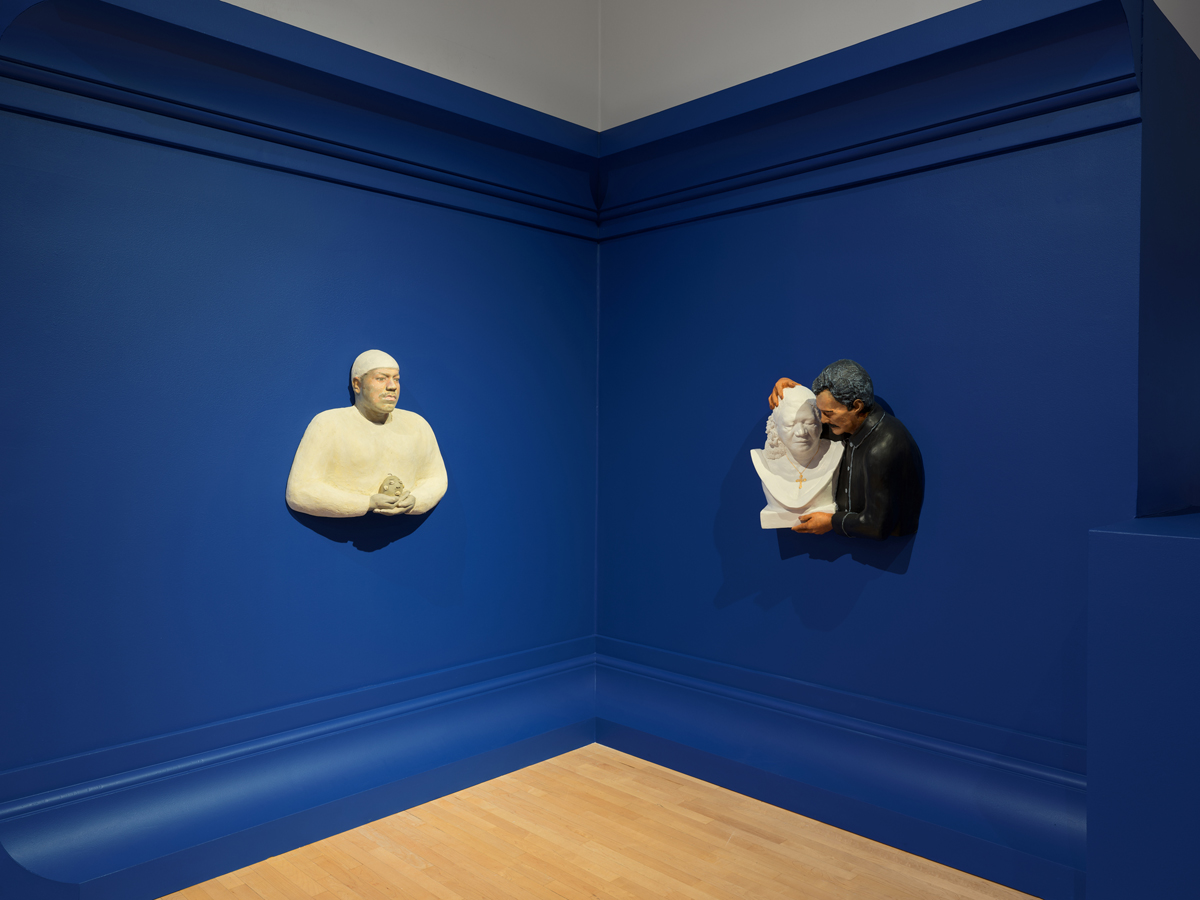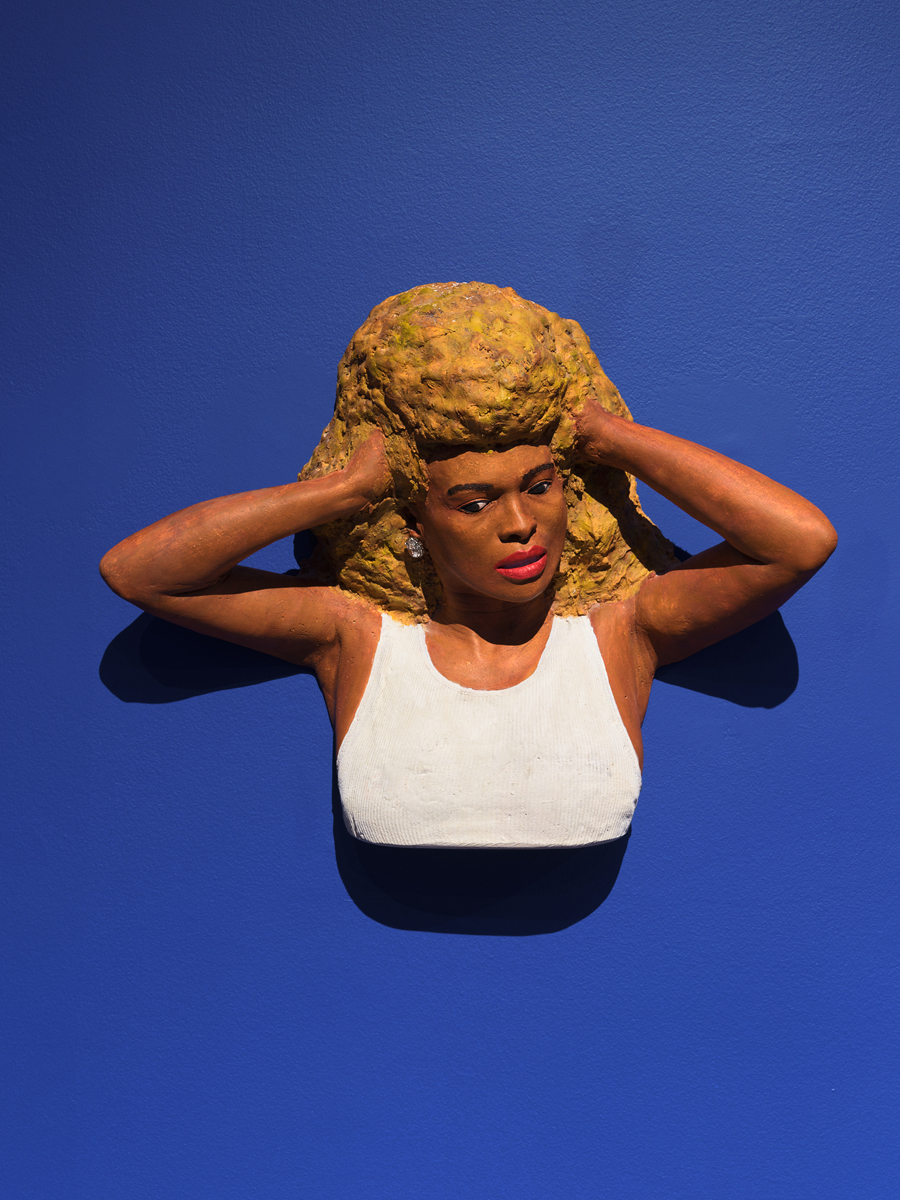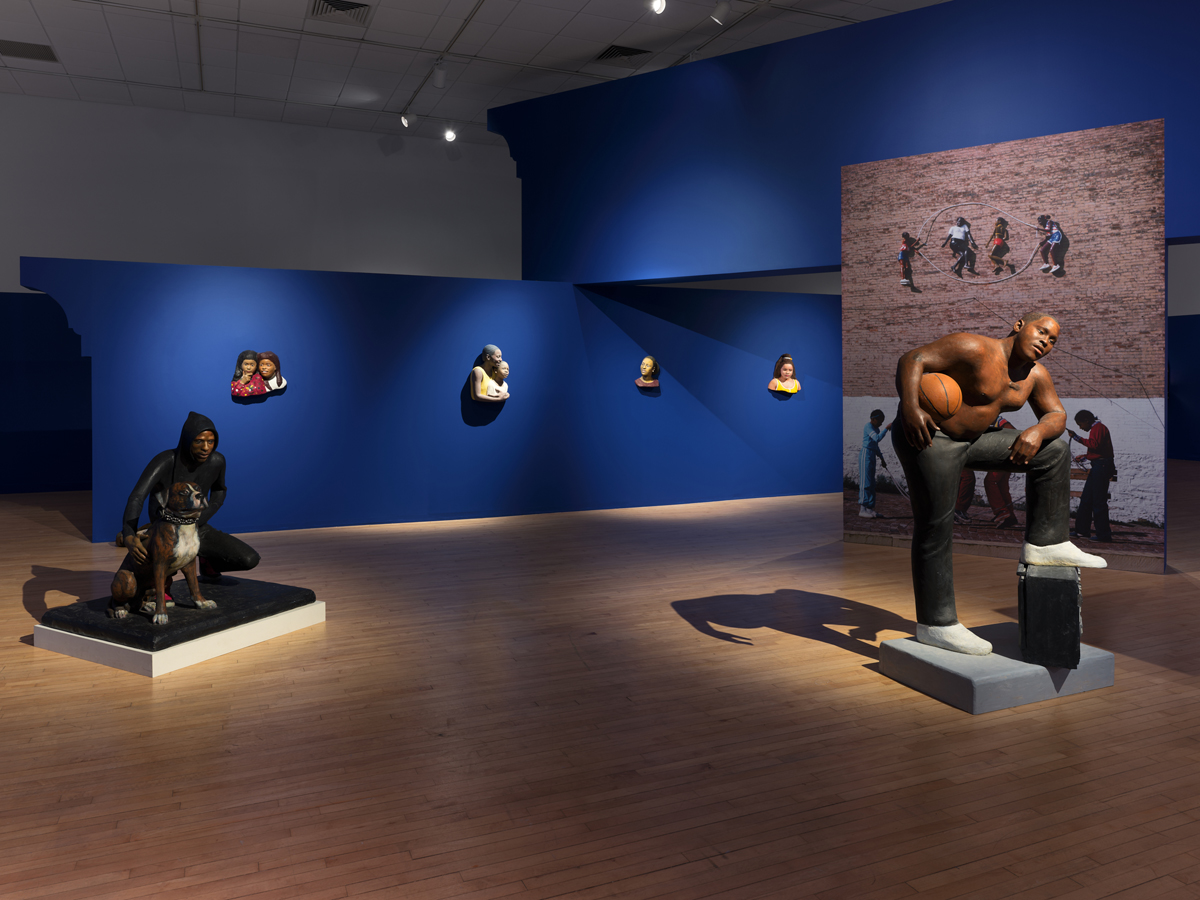 Alex Kitnick
Alex Kitnick
Plaster for the people: a spirit of collectivity and collaboration in a show of sculptural works by John Ahearn and Rigoberto Torres.

Swagger and Tenderness: The South Bronx Portraits by John Ahearn and Rigoberto Torres, installation view. Courtesy the Bronx Museum, Charlie James Gallery, and Alexander and Bonin. Photo: New Document.
Swagger and Tenderness: The South Bronx Portraits by John Ahearn and Rigoberto Torres, curated by Amy Rosenblum-Martin and Ron Kavanaugh with community advisors including Alveda Alston, Leenda Bonilla, Johnny Chavarria, Luís A. Pagán, and Moisés Rivera, Bronx Museum, 1040 Grand Concourse, Bronx, through April 30, 2023
• • •
The artist John Ahearn first visited the South Bronx in the late 1970s. Stefan Eins had just opened the alternative space Fashion Moda in a former clothing store, and Ahearn, a member of the Colab collective, was drawn to the borough’s street life, which he saw in marked contrast to the moneyed art world of lower Manhattan. Excited by this new scene, Ahearn had the idea to create casts of the people he met there—first at Fashion Moda, then at street parties and gatherings he hosted in the neighborhood. That was how he came to know Rigoberto Torres, who was working at the time at his uncle’s statuary factory making plaster Elvises and Virgin Marys. The two started a partnership, but the nature of their relationship has never been clear-cut. The multiple formulations on the wall labels in their important two-person exhibition at the Bronx Museum—including works by John Ahearn, by Rigoberto Torres, by John Ahearn and Rigoberto Torres, by John Ahearn with Rigoberto Torres, and by Rigoberto Torres with John Ahearn—suggests a complex and evolving dynamic as well as the immensely generative nature of their bond.

Rigoberto Torres and John Ahearn casting at block party, Walton Avenue, Bronx, 1985. Courtesy John Ahearn, Rigoberto Torres, and Alexander and Bonin. Photo: Ivan Dalla Tana.
Ahearn and Torres came from different places. Born in Binghamton to an Anglo-Irish family and educated at Cornell, Ahearn moved to the Bronx, while Torres had never lived anywhere else. Ahearn was aware of his status as an interloper, as someone with a foot in two worlds (he was occasionally burned by both), and to some extent the process of casting let him be in both places at once. After creating a mold, he made one cast for the model and one for himself, the latter typically offered for sale. While Ahearn may have used his adopted home’s “authenticity” to create an aura for his art, it’s probably more accurate, and less cynical, to say that his work circulated in multiple economies, existing as both gift and commodity, and yet it might have made its greatest impact when functioning as a landmark. Alongside Torres, Ahearn created three relief murals in the South Bronx in the early 1980s, when the area was held up as an example of urban blight—Homage to the People of the Bronx: Double Dutch at Kelly Street (1981–82), We Are Family (1981–82), and Life on Dawson Street (1982–83), all depicting groups of people at leisure and play. Included on the exhibition’s checklist, but not within walking distance of the museum, they still hang on the sides of apartment buildings, shaded by trees, life-size yet somehow smaller than you’d expect. Presented in galleries and set off against royal blue walls, similar castings reveal details one might not notice outside. The muted, vaguely funereal quality of Ahearn’s paint handling, for example, suddenly evokes Egyptian encaustics.

We Are Family with Double Dutch in the distance, 1982. Photo: Ivan Dalla Tana.
Given Ahearn and Torres’s shared methods, I wondered if I’d be able to tell their work apart, but differences quickly became clear. Brighter in hue, Torres’s art puns more on its objecthood, offering allegories for painting and sculpture. In Shorty Working at the C&R Statuary Corp. (1985) and the later Raúl with Bust of Ruth Fernández (1998), the two titular characters grasp white plaster casts, drawing attention to the fact that Shorty and Raúl are plaster casts, too, while Daze (1998) presents a masked figure holding an enormous bouquet of spray-paint cans. These exercises in statuesque self-referentiality emphasize the important role of pigment in their creation. If casting, and its connotations of collectivity, comes first, then coloring, and its candor, is a crucial second. Indeed, the effect of Swagger and Tenderness is not unlike that of Chroma: Ancient Sculpture in Color, recently at the Metropolitan Museum of Art, which introduced replicas of multihued Greek sculpture into the blindingly bleached galleries of antiquity. Both exhibitions give the lie to the myth of whiteness.

Swagger and Tenderness: The South Bronx Portraits by John Ahearn and Rigoberto Torres, installation view. Courtesy the Bronx Museum, Charlie James Gallery, and Alexander and Bonin. Photo: New Document. Pictured, right: Rigoberto Torres, Raúl with Bust of Ruth Fernández, 1998.
As strong as this show is, not everything succeeds. The sentimentality that both Ahearn and Torres are sometimes accused of (but which, upon seeing the works, rarely appears) stands out in the preposterous full-body cast Orlando the Donut Man (1987), a showboater in a red-striped shirt and camo pants hawking two trays of piping-hot goods. Though it belongs to the Lehman College art collection, it wouldn’t be out of place at a Shakey’s Pizza. Maybe it’s significant that this sculpture is one of the few objects in the exhibition made of fiberglass, a material typically used for insulation. Ahearn and Torres are plaster casters through and through.

Rigoberto Torres, Margie Villa, 1993. Courtesy the Bronx Museum, Charlie James Gallery, and Alexander and Bonin. Photo: New Document.
There’s something populist about plaster, and the question of materiality calls the viewer’s attention to art by contemporaries with whom Ahearn and Torres are seldom compared. Consider Jeff Koons’s painted porcelain Pink Panther (1988), or Duane Hanson’s realist resin Supermarket Lady (1969–70). In different ways, both Koons and Hanson played with popular taste, but only to deliver it to elites. Refusing kitsch and the uncanny alike, Ahearn and Torres committed themselves to a vernacular way of working that expanded the site of the studio and excited the process of making while pushing documentary modes toward the immutable. Both remain devoted to this project today.

Swagger and Tenderness: The South Bronx Portraits by John Ahearn and Rigoberto Torres, installation view. Courtesy the Bronx Museum, Charlie James Gallery, and Alexander and Bonin. Photo: New Document. Pictured, foreground, left to right: John Ahearn and Rigoberto Torres, Raymond and Toby, 1991; John Ahearn and Rigoberto Torres, Corey, 1988.
But not everything lasts, of course. In 1991 Ahearn installed three sculptures—Corey, Daleesha, and Raymond and Toby—in front of a police station in the Bronx, in view of Yankee Stadium. They stood in situ for a night or so. Nobody liked them, to put it mildly—their location seemed particularly egregious given that Ahearn had sited previous works in communal spaces in the neighborhood—and the artist eventually had them removed at his own expense. (The bronze originals are currently tucked away at Socrates Sculpture Park in Queens.) Versions of the two male figures stand in the middle of the back gallery here, one bearing basketball and boom box, the other kneeling next to his pit bull. To be honest, they look a little out of place, but maybe it’s just that they look less like individuals—like Janelle and Audrey (1983)—than they do types of people.

Swagger and Tenderness: The South Bronx Portraits by John Ahearn and Rigoberto Torres, installation view. Courtesy the Bronx Museum, Charlie James Gallery, and Alexander and Bonin. Photo: New Document. Pictured, far left: John Ahearn with Rigoberto Torres, Janelle and Audrey, 1983. Center: Rigoberto Torres, Shorty Working at the C&R Statuary Corp., 1985.
The controversy that encircled these sculptures—the community outcry led to a New Yorker profile and later a book, and they are still presented as prime examples of public art in crisis—cast a shadow over both these artists that, for many years, made it hard to see their work on its own terms, proving this survey all the more necessary. While collectivity is given plenty of lip service today in contemporary art discourse, it is rare to find it cast so concretely—and so convincingly.
Alex Kitnick teaches art history at Bard College in Annandale-on-Hudson, New York.